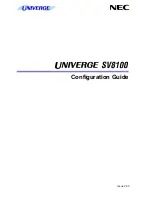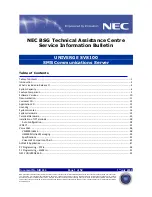Reviews:
No comments
Related manuals for E60S

Univerge SV8100
Brand: NEC Pages: 78

Univerge SV8100
Brand: NEC Pages: 186

Univerge SV8100
Brand: NEC Pages: 150

Univerge SV8100
Brand: NEC Pages: 52

ACD-2200
Brand: ACTi Pages: 15

9131-52A
Brand: IBM Pages: 16

NPort W2150Plus Series
Brand: Moxa Technologies Pages: 167

WPS Pro EU
Brand: DNP Pages: 93

Norand 6920
Brand: Intermec Pages: 232

DVG-1100
Brand: Advantech Pages: 43

WindBOX Series
Brand: MSI Pages: 18

X 330 Series
Brand: IBM Pages: 76

PRIMERGY Econel 230R S1
Brand: Fujitsu Pages: 53

Primergy ECONEL 100 S2
Brand: Fujitsu Pages: 8

PRIMERGY Econel 200 S2
Brand: Fujitsu Pages: 65

PRIMERGY MX130 S1
Brand: Fujitsu Pages: 85

PRIMERGY Econel 100
Brand: Fujitsu Pages: 64

primergy h250
Brand: Fujitsu Pages: 105

















